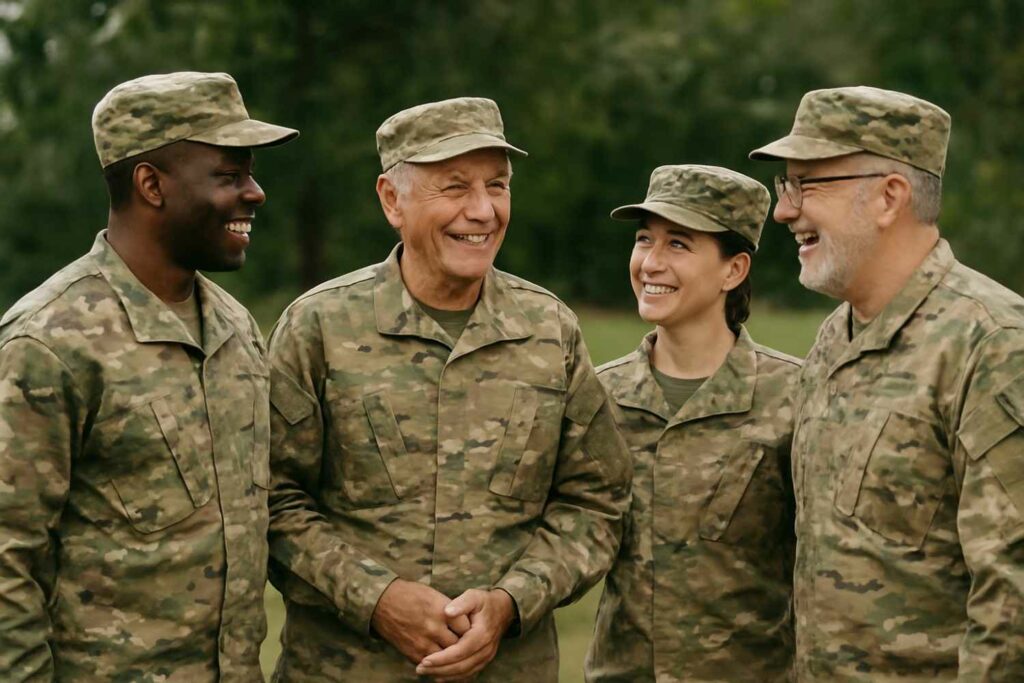How To Enrol In The Military At An Older Age
For those exploring Senior Military Careers or Military Jobs for Older Adults, age doesn’t have to be a barrier—it can be an advantage. This guide breaks down everything you need: eligibility, role-matching, training timelines, military salary basics, and a step-by-step roadmap. The goal is simple—an efficient, clear, and empowering path for older candidates exploring Military Jobs for Older Adults or Military Careers After Retirement.

Where to Find Openings:
- Start with a local recruiter, then search each branch’s career portal.
- For civilian roles, USAJOBS Military Careers lists thousands of openings annually.
- Use localized searches like “Veteran Jobs Near Me,” “Military Jobs in California,” or “Civilian Jobs on Military Bases in Florida” to locate nearby opportunities.
Application Process (Step-by-Step)
- Identify whether you want Active Duty, Reserve, National Guard, or civilian federal roles.
- Gather documentation: certifications, transcripts, licenses, physicals.
- Request an age and eligibility screening with a recruiter.
- Schedule ASVAB and MEPS medical evaluations.
- Match your experience to high-demand specialties.
- Build a federal résumé for civilian roles, using measurable results.
- Begin 6–8 weeks of conditioning for fitness tests.
- Confirm start dates, benefits, relocation factors, and contract details.
What Roles Fit Older Recruits?
Many fields reward judgment, reliability, and professional history—areas where older adults naturally excel.
Strong fits include:
- Cybersecurity & intelligence analysis
- Medical & clinical support roles
- Aircraft maintenance & aviation operations
- Supply, transportation, and logistics
- Training, instruction, and safety roles
Senior Career Opportunities are especially strong in mission-support environments where leadership and composure are essential. If you’re aiming for Military Jobs for Seniors Over 60, civilian positions often offer even more flexibility, long-term stability, and competitive compensation.
Pay, Benefits & Timelines
Expect 3–6 months from initial contact to shipping for training. Basic training typically runs 8–12 weeks, followed by specialty training ranging from 6 to 52 weeks depending on the complexity of the job.
Military salary includes:
- Base pay
- Housing allowances (when eligible)
- Healthcare and dental coverage
- GI Bill and education programs
- Retirement accrual based on years of service
- Older recruits should build a 12-month financial plan factoring in training, relocation, and household needs.
Civilian Paths on Military Bases
The Department of Defense employs a large civilian workforce—growing each year. Retirees and older professionals are highly valued for reliability and domain expertise. With salaries averaging around $65,000 in states like California and steady demand across healthcare, IT, facilities, operations, and support services, these roles offer excellent Military Careers After Retirement.
Conclusion
The bottom line is clear: older adults can absolutely serve—either in uniform or through meaningful civilian roles. If you want to know how to apply for senior military jobs, it comes down to matching your skills to high-need roles, confirming eligibility quickly, and moving through each step with confidence and preparation. Your experience is your advantage, and the mission needs it.







